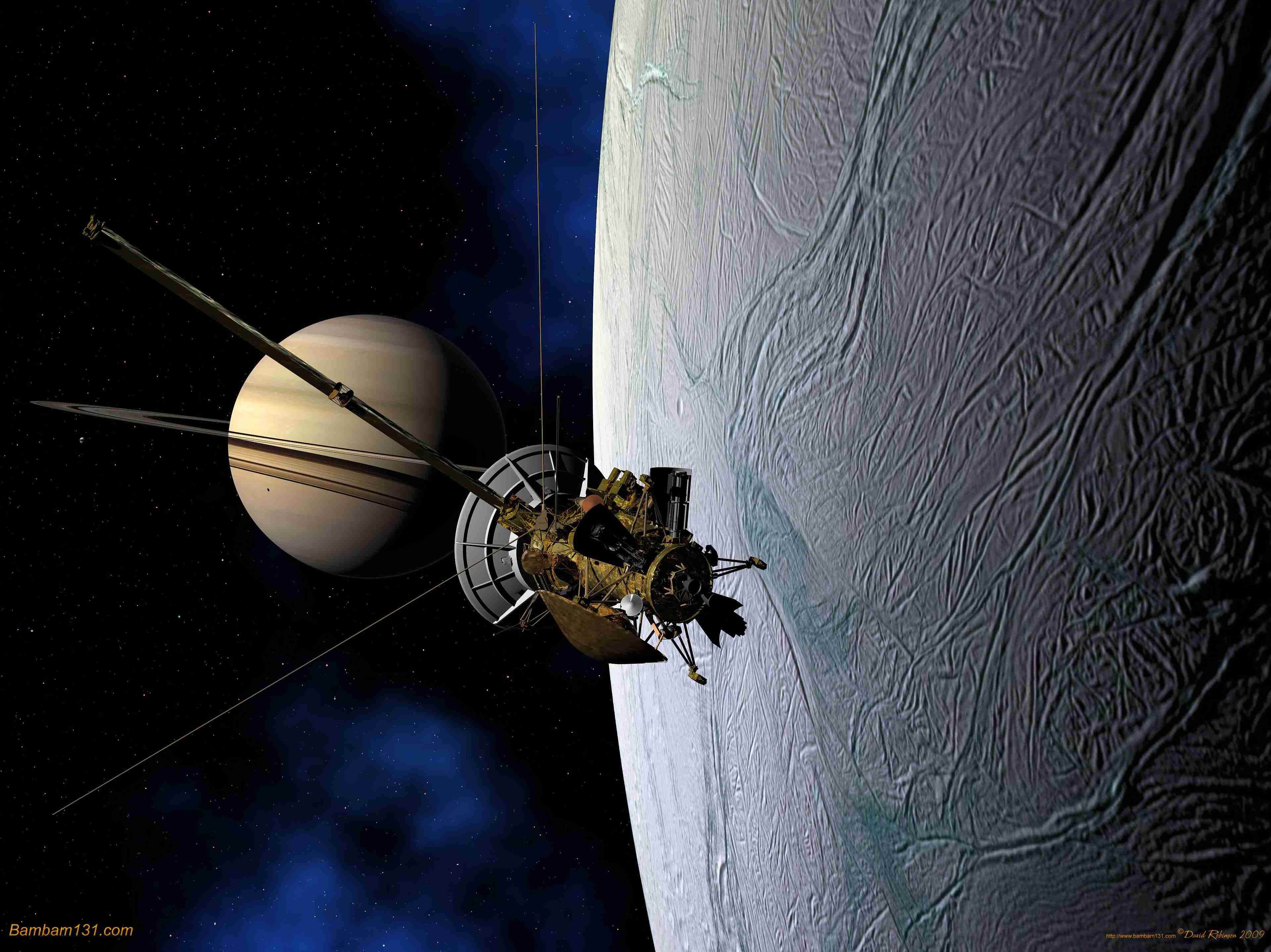Astronomical studies have reached a very important
level with scientific research. Scientists doing research on many
planets and satellites began to send vehicles to Saturn's moon, Enceladus, to
do research. NASA sent the Voyager spacecraft in 1977
and the Cassini Huygens probe in 2005. As a result of the studies, they
determined that Enceladus had most of the chemical components necessary for
life and probably hydrothermal vents that spread warm, mineral-rich waters into
the ocean.
The heat energy
emitted from hydrothermal chimneys, hydrogen compounds, and the presence of
similar inorganic substances are sufficient for them to survive. Also, the
liquid water prospects on the South Pole side make it an interesting target for
future missions.
 |
| CGI of Cassini, Enceladus and Saturn |
According to the data obtained by NASA, it was stated that Enceladus had a diameter of about 500 km (310 miles) and it was white all over. Enceladus has been described as the most reflective structure in the solar system because it reflects a lot of sunlight and the surface temperature is extremely cold for this reason.
The measured value at the surface temperature is defined as a minimum of 32.9 K (-240 ° C) and a maximum of 145 K (-128 ° C). Enceladus' productive cryovolcanic activity gives us signs that there is enough heat to handle chemical events. Also, the productive activity and the presence of geysers in Enceladus offers us a unique opportunity to sample the interior of an icy satellite.
Enceladus is recognized with all research as one of the most likely places of the solar system for extraterrestrial life. In a hydrogen report identified in the geysers in Enceladus, hydrogen is expected to be released as a byproduct of the reactions between water and rock. Scientists believe that the ocean water in Enceladus hits the rock, was, chemically reacts, and rises in the ocean through hydrothermal vents. It is also present in the world's oceans, which show impressions that research is having a positive impact on life. The information delivered by Cassini has stopped when the Cassini space probe died in 2017. Research continues in line with the information obtained from him. After our scientists have done so much to take advantage of Enceladus, they can implement their creative plans for Enceladus, within the information that is developing in the near future. Research provides evidence that great things are ahead of us in the near future.

Hiç yorum yok:
Yorumunuz alınmıştır. Teşekkürler.